2024-11-25
Cindy Li /photo by TAISE /tr. by Phil Newell
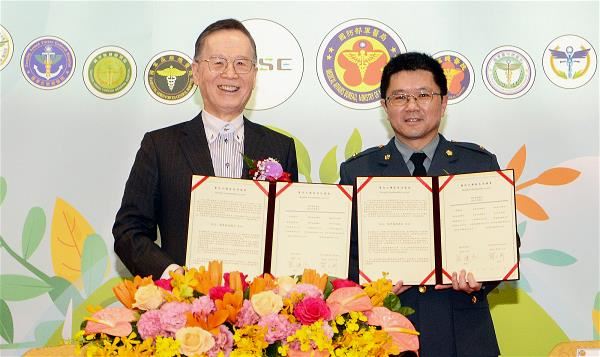
The 28th Conference of the Parties to the United Nations Framework Convention on Climate Change (COP28) for the first time designated one day of their meeting as Health Day. More than 120 of the participating countries signed the Declaration on Climate and Health, reminding us all that we must remain aware of the health implications of climate change.
At the 2024 SDG Asia Summit, held in August of 2024, besides the typical topics of carbon emissions reduction, ecological conservation, and renewable energy, for the first time there was discussion of healthcare technology and management. What is the significance of this in terms of sustainability?
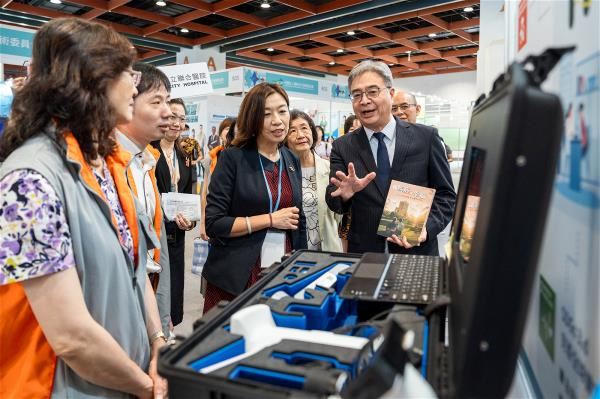

Also a producer of carbon emissions
Besides causing frequent natural disasters, climate change brought on by global warming tests the ability of healthcare systems to deal with increasingly serious external risks. Nonetheless, these systems are also one of the sources of climate change. Eugene Chien, chair of the Taiwan Institute for Sustainable Energy (TAISE), notes that healthcare systems account for some 4.4% of global carbon dioxide (CO2) emissions. This is greater than the marine transport (3%) and air transport (2.5–3%) industries, and equivalent to the annual output of the fifth-ranked nation in global rankings of greenhouse gas (GHG) emissions.
In Taiwan, healthcare-related enterprises and organizations including the pharmaceutical industry account for 4.6% of CO2 emissions, making this sector one of the major CO2 contributors outside of manufacturing. Hospitals account for 16% of Taiwan’s domestic energy use, 3% higher than the energy-intensive transportation sector. Every time these figures are brought to the attention of hospitals, “even the hospitals themselves are shocked.”

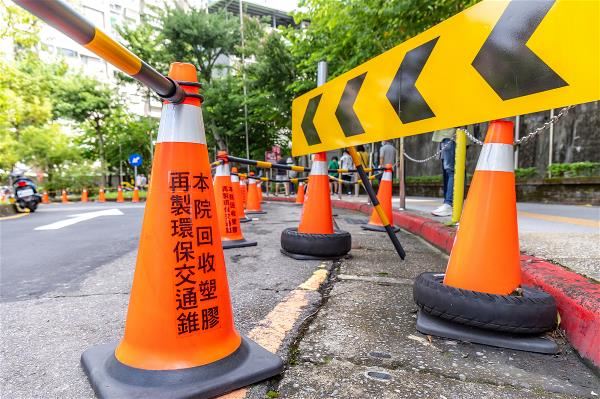
The power-saving challenge
Looking at energy use by Taiwanese hospitals, electricity consumption accounts for 90%, of which about 60% is for air conditioning (A/C), while lighting and elevators account for 10% each. To reduce carbon emissions, hospitals must focus on energy-saving measures in these areas.
Saving energy and reducing carbon emissions is a real challenge for healthcare institutions. Chen Chien-tzung, superintendent of the Linkou branch of Chang Gung Memorial Hospital (CGMH), admits: “Hospitals, like convenience stores, operate 24/7, and where there is activity there will be carbon emissions.” To ensure safety, we have to use A/C to control ambient temperatures at all times. But setting the A/C at what most people regard as the energy-saving level of 28°C affects the equipment and human behavior in operating rooms.
Despite such constraints, hospitals are adopting creative solutions, including installing solar power panels to generate electricity, and updating their hardware and facilities to save energy.
Take elevators, for example. Elevators in hospitals generate carbon emissions each time their doors open or close and they go up or down. At peak periods they stop on every floor, adding to resource use. The “smart” elevators at Taichung Veterans General Hospital (TCVGH) use a smart traffic monitoring system to reduce energy use by 12.9%, and use thermal energy from the elevator drive systems to generate electricity.
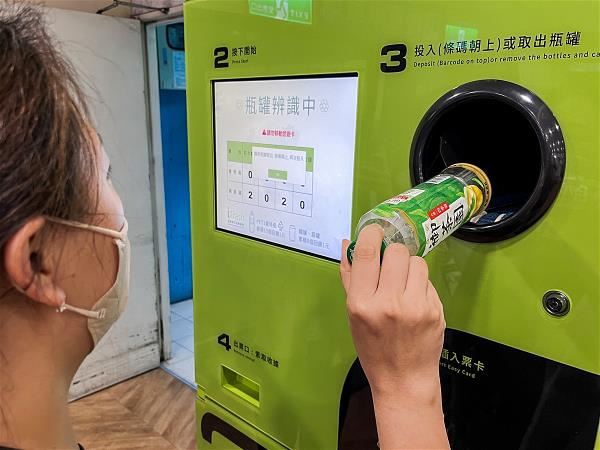
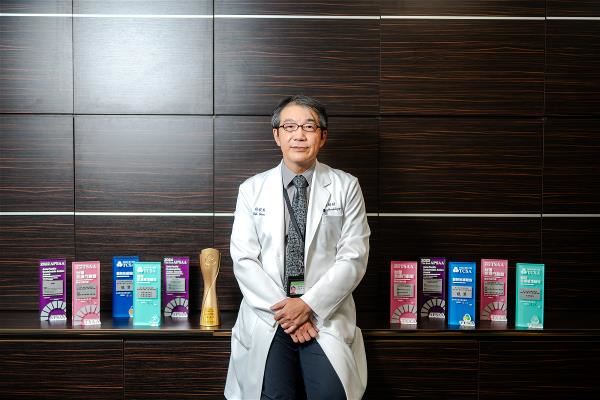
Boosting recycling and circular use
Another element calculated into GHG emissions is waste. However, medical waste generated at hospitals carries risk of infection, so it requires special treatment. Management of glass, a common packaging material, produces a lot of CO2. In the past, CGMH in Linkou incinerated their glass waste, producing an average of 22,304 kilograms of CO2 emissions per year. But now, with separation, crushing and washing of waste glass they produce only 52 kg of CO2 per year and save nearly NT$500,000 in waste processing expenses.
Shuangho Hospital in Zhonghe, New Taipei City, operated by the Ministry of Health and Welfare (MOHW), not only recycles glass into material for ceramic tiles, they also recycle their plastic. For example, the soft bags used for hemodialysis, made of polyvinyl chloride, can be recycled into raw material for tires, with about 5,000 kg recovered per year. High- and low-density polyethylene used in the hospital pharmacy can be remade into trash bags, public relations gift pens, and containers for sharp medical waste. Hospital superintendent Cherng Yih-giun says that their newly made plastic bags received environmental certification in March and can not only be used in-house but also sold to the public.
Measures to reduce CO2 emissions can also relieve pressure on hospital staff. The electronic patient charts used at TCVGH, for example, are not only useful for rapidly integrating patient notes and doctors’ instructions so that staff can provide proper care and medication, they can also save 19 minutes per bed of daily working time spent on updating patient charts. This means that across the hospital’s 1,600 beds, 432 working hours can be saved per day, equivalent to the work of around 54 hospital staff. Meanwhile, the smart “just-in-time” medication management system can save 44 minutes of the time usually required to deliver medication to surgical units, and 80 minutes for intensive care units.
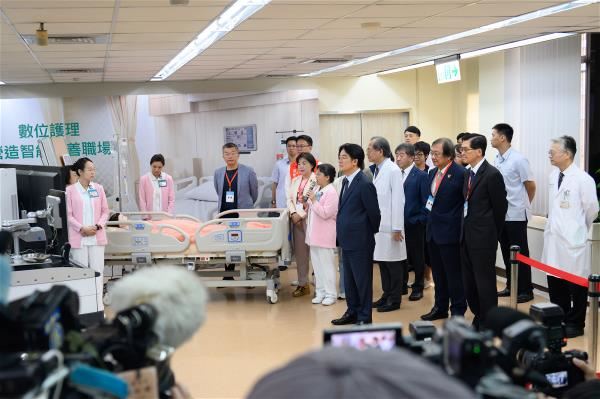

Carbon emissions everywhere
Eugene Chien notes that when hospitals can reduce energy use in their major power-consuming systems, this can also help hospital administrators cut costs.
Cherng Yih-giun points to his own hospital, Shuangho, as an example. Over a four-year period the hospital has reduced CO2 emissions by 20%. They have kept “site energy use intensity” (a measure of a building’s energy efficiency) at an average of some 220 kilowatt-hours per square meter of floor space per year, near the average for Taiwan of 224 kWh/m2. “But in the past two years we have hit a bottleneck.” He adds: “Sooner or later we will have to adopt the Corporate Value Chain standard [Scope 3 under the GHG Protocol] to make breakthroughs in energy management and carbon emissions management.”
Among the various global standards for carbon footprint verification, ISO 14064-1:2006 divides GHG emissions quantification into three “scopes.”
Scope 1 is for CO2 directly emitted by an enterprise, while Scope 2 is for indirect emissions, including those arising from the manufacture of medical materials and from the generation of purchased energy, including electricity and thermal energy. Scope 3 is for all other indirect emissions, which, as Cherng Yih-giun notes, are difficult for all enterprises, including hospitals, to quantify. They include emissions produced by upstream and downstream portions of the corporate value chain, such as commuting by staff, visits by patients and other visitors, medication deliveries, and especially the carbon emissions generated in the manufacture of medical materials.
This is why Taiwan’s top medical materials logistics company, Zuellig Pharma Taiwan, and Taiwan’s biggest pharmaceuticals company by revenue, Lotus, were invited to the 2024 SDG Asia Forum to discuss potential future collaborative programs to reduce emissions with the hospital representatives in attendance.
An important partner of healthcare facilities in Taiwan, Zuellig has adopted the “eZ Cooler” packaging system to replace expanded polystyrene. The containers can keep goods at low temperatures for 60 hours and can be reused. The company also plans to import vehicles conforming to Euro 6 emissions standards to reduce carbon emissions during the delivery of medical materials, and is looking for electric vehicles that can safely deliver such materials.
Zuellig Pharma Taiwan managing director John Chou mentions the concept of managing deliveries using AI, and hopes that in future there will be a shared system for materials inventories at hospitals. When the system detects which items different hospitals are running low on, it can make an integrated plan for deliveries to all healthcare institutions in a given area, thereby minimizing CO2 emissions and maximizing efficiency.


Healthy Taiwan, sustainable healthcare
Before Health Day at COP28, TAISE was already promoting sustainable healthcare in Taiwan. In less than two years it has signed “hospital sustainability accords” with 89 hospitals, so that Taiwan can get in line with international standards. Eugene Chien reveals: “We never expected signing these accords to go so rapidly and smoothly.” But he stresses that this is only the beginning.
It is proving challenging for healthcare institutions to achieve net-zero CO2 emissions, and this is only the first stage on the long road to sustainable healthcare. Even as they reduce carbon emissions and energy use, these institutions have to continue with their efforts in the areas of social responsibility and corporate governance.
At the first meeting of the Healthy Taiwan Promotion Committee, President Lai Ching-te stated: “Healthy Taiwan is our goal.” He also said: “Taiwan must actively address critical health-related challenges,” including chronic illnesses that impact average lifespan, emerging transnational communicable diseases, low birthrates, and an aging society. Whatever the programs—the fund for new cancer drugs, the integrated-care family medicine project, or the NT$60.7 billion investment in medical treatment and care to create a Healthy Taiwan—the goal is “sustainable healthcare.”
Eugene Chien says: “This will be a lengthy process, and after reaching carbon neutrality by 2050, we will then move towards the carbon-negative stage.” The challenges will become even tougher in the future.

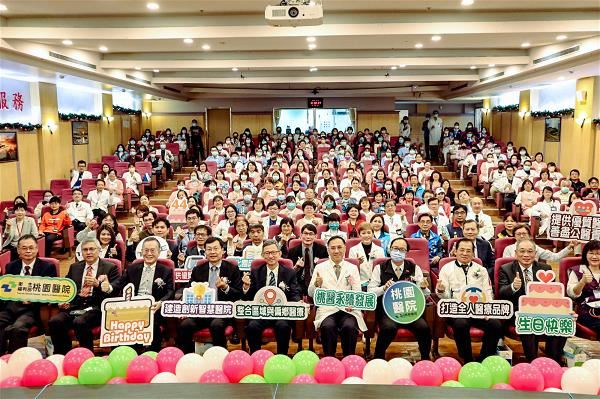
Article and photos courtesy of Taiwan Panorama November 2024





